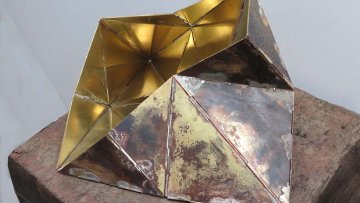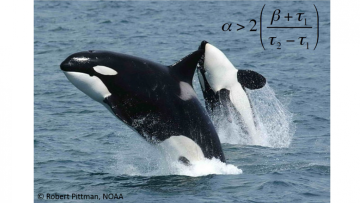The Andrew Wiles Building, our home here in Oxford, is very much a public space with its large exhibition and conference facilities and public cafe. We have hosted theatrical productions, most recently Creation Theatre's stark production of Orwell's '1984' and in particular we have provided an outlet for artists and photographers to display their work.
Michael Bonsall, Professor of Mathematical Biology at Oxford University's Department of Zoology, discusses his research in population biology, what it tells us about species evolution and, in particular, why grandmothering is important to humans. His research was done in conjunction with Oxford Mathematician Jared Field.
"What is mathematical biology?
16:00
A discussion of Lurie's proof of the cobordism hypothesis
Abstract
Despite its fame there appears to be little literature outlining Lurie's proof sketched in his expository article "On the classification of topological field theories." I shall embark on the quixotic quest to explain how the cobordism hypothesis is formalised and give an overview of Lurie's proof in one hour. I will not be able to go into any of the motivation, but I promise to try to make the talk as accessible as possible.
Moduli spaces of singular curves
Abstract
Moduli spaces attempt to classify all mathematical objects of a particular type, for example algebraic curves or vector bundles, and record how they 'vary in families'. Often they are constructed using Geometric Invariant Theory (GIT) as a quotient of a parameter space by a group action. A common theme is that in order to have a nice (eg Hausdorff) space one must restrict one's attention to a suitable subclass of 'stable' objects, in effect leaving certain badly behaved objects out of the classification. Assuming no prior familiarity, I will elucidate the structure of instability in GIT, and explain how recent progress in non-reductive GIT allows one to construct moduli spaces for these so-called 'unstable' objects. The particular focus will be on the application of this principle to the GIT construction of the moduli space of stable curves, leading to moduli spaces of curves of fixed singularity type.
16:00
Manifolds with a-corners & moduli space of Morse flows
Abstract
Manifolds with ordinary boundary/corners have found their presence in differential geometry and PDEs: they form Man^b or Man^c category; and for boundary value problems, they are nice objects to work on. Manifolds with analytical corners -- a-corners for short -- form a larger category Man^{ac} which contains Man^c, and they can in some sense be viewed as manifolds with boundary at infinity.
In this talk I'll walk you through the definition of manifolds with corners and a-corners, and give some examples to illustrate how the new definition will help.
Symplectic Cohomology for Quiver Varieties
Abstract
Floer (co)homology, invariant which recovers periodic orbits of a Hamiltonian system, is the central topic of symplecic topology at present. Its analogue for open symplecic manifolds is called symplectic (co)homology. Our goal is to compute this invariant for big family of spaces called Nakajima's Quiver Varieties, spaces obtained as hyperkahler quotients of representation spaces of quivers.
Integrating without integrating: weights of Kontsevich graphs
Abstract
Abstract: The Kontsevich graph weights are period integrals whose
values make Kontsevich's star-product associative for any Poisson
structure. We illustrate, by using software, to what extent these
weights are determined by their properties: the associativity
constraint for the star-product (for all Poisson structures), the
multiplicativity (decomposition into prime graphs), the cyclic
relations, and some relations due to skew-symmetry. Up to the order 4
in ℏ we express all the weights in terms of 10 parameters (6
parameters modulo gauge-equivalence), and we verify pictorially that
the star-product expansion is associative modulo ō(ℏ⁴) for every value
of the 10 parameters. This is joint work with Arthemy Kiselev.



